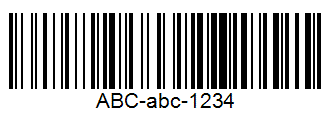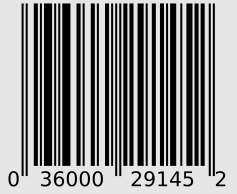Whether you’ve worked in retail before or have glanced at product labels in a store, you’ve likely noticed UPC codes and barcodes, and heard of the word “SKU.” But what are their functions? How are they similar, yet different from each other?
SKU
“SKU” stands for “stock keeping unit.” A SKU is a custom set of letters and numbers (alphanumeric). They’re important for various reasons–the most important being that they help store owners and employees differentiate between products and group them by vendor, style, and other characteristics.
You may create your own SKUs for the products you sell, or you may choose to merge them with your vendor’s UPC (Universal Product Code) system. That choice is yours.
We recommend making your SKUs simple yet distinguishable. Here are some tips to help when creating your SKUs.
Pictured: Artisan’s Numbering Scheme Section
- Make the first few characters (or digits) something easily identifiable. In Artisan, you have an option for the program to generate unique codes for you to save you time while creating Item Records.
- Artisan recommends using the vendor’s initials or a category code at the beginning of your item code. A common example is selecting the “Vendor + Item” option. Artisan will create the item code based on the item’s vendor and what number item this is from that vendor. It will also include the number of digits you want this item code to be. Let’s say this is the 24th item from vendor ABC, and we set the number of digits to four. Artisan will create a code based on that information: ABC0024.
For more information on SKUs and Artisan’s numbering scheme, please click here.
UPC
UPC stands for “Universal Product Code.” They are typically 12 digits long and are based on the Global Standard Organization system, which is used by vendors and manufacturers in America and Canada.
UPC codes are usually below the scannable portion of the barcode. They begin with a Company Prefix, which is the first six to nine digits, assigned by an organization like the GS1. Next are product numbers, which are assigned by your vendor. The last digit, the 12th digit, is a “check digit.” This digit is calculated and determined by the previous 11 digits.
Remember – UPC codes are generated by an organization like GS1. You do not make this code up yourself.
Barcodes
Much like the UPC code, barcodes follow certain standards in order to scan correctly. There are a few different types of barcodes.
Code 128 vs Code 39
Code 128 barcodes are generally shorter than Code 39 barcodes. They are usually printed clearer than Code-39 barcodes due to their higher density. Code 128 barcodes can encode more characters and numbers than code 39 barcodes, such as the ASCII Character Set.
An example of a code 128 barcode:
Code 39 barcodes can encode between 39 to 43 characters total. Though they can support percentage symbols, plus signs, dollar signs, slash marks, periods, and hyphens, they do not support the ASCII Character Set. Unlike Code 128 barcodes, they do not include a check digit. A check digit is a system used to identify any typos or errors in digits.
An example of a code 39 barcode:
UPC Barcodes
UPC barcodes are created by the GS1 and are obtained on their website. This barcode includes a UPC company prefix, an item reference number, and a check digit.
EAN-13
EAN-13 (European Article Number) barcodes are used globally. They look similar to UPC barcodes, save for a few key differences.
EANs have a “Country Code” at the beginning of the barcode. The prefix and item number is in the same place as the UPC code, while the check digit is moved at the end of that section.
1D vs 2D
You might have seen the term “1D” and “2D” barcodes before. What’s the difference?
1D barcodes are one-dimensional and linear. They are made of vertical lines with fixed spaces between them.
An example of a 1D barcode:
2D barcodes
2D barcodes are the type of barcode on the back of drivers’ licenses.
They also appear in marketing emails and coupons on your phone. Newer scanners can scan more unique 2D barcodes known as “QR Codes” and “Data Matrixes.” These usually link to store websites, social media, and special offers.
Now that you have an understanding of barcodes and SKUs, consider completing the “Let’s Get Started” guide if you haven’t already.








